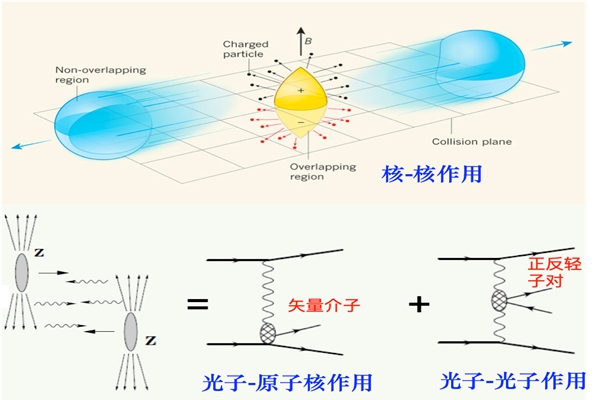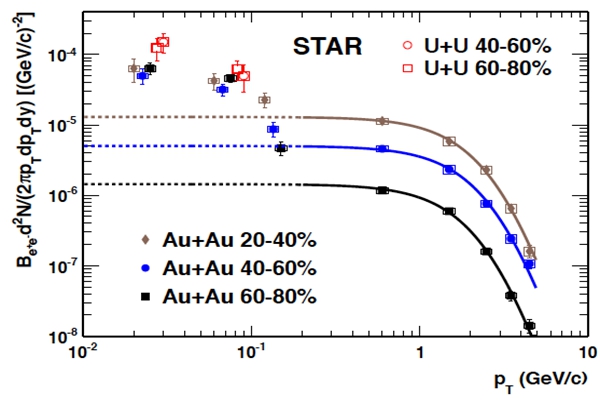Recently, researchers at RHIC-STAR experiment reported the observation of excess J/ψ yield at very low transverse momenta (pT) in heavy ion collisions (HICs). Dr. Chi Yang and Dr. Qian Yang from Institute of Frontier and Interdisciplinary Science of Shandong University, with their collaborators from University of Science and Technology of China and Brookhaven National Laboratory did this measurement and firstly measured the momentum distribution of these very low pTJ/ψ. The measurements strongly suggest the dramatic enhancement of J/ψ yield observed at extremely low transverse momenta originates from coherent photon-nucleus interactions at non-central HICs. Coherently produced J/ψ in violent hadronic HICs may provide a novel probe of the quark-gluon plasma.
The results have been published in Physical Review Letters [Phys. Rev. Lett. 123 (2019) 132302 (https://doi.org/10.1103/PhysRevLett.123.132302)]. As a series of achievements, the same group reported the first measurements of dilepton pair production at low transverse momenta [Phys. Rev. Lett. 121 (2018) 132301 (https://doi.org/10.1103/PhysRevLett.121.132301)] in non-central HICs, which is believed to generate from coherent photon-photon interactions.
 |
 |
Schematic diagram for non-central HIC J/ψ production enhancement at low transverse momentum region
The researchers from Shandong University play an important role in the measurement. Recently, this group is leading the discovery of these abnormal phenomenons in non-central HICs. The RHIC-STAR iTPC upgrade is another important contribution of Shandong University, which will significantly increase the measurement precision and provide support for these important observations.
The STAR Collaboration consists of 66 institutions from 14 countries and a total of over 600 collaborators. Eight institutions from Mainland China are members of this international collaboration: Fudan University, Huzhou University, Central China Normal University, Tsinghua University, Shandong University, University of Science and Technology of China, Institute of Modern Physics and Shanghai Institute of Applied Physics of Chinese Academy of Science. The research of STAR Group in Shandong University is supported by the National Natural Science Foundation of China, the Ministry of Science and Technology, Natural Science Foundation of Shandong Province and Shandong University.
Source: the Institute of Frontier and Interdisciplinary Science of Shandong University
Written by: Nie Maowu
Edited by: Xie Tingting